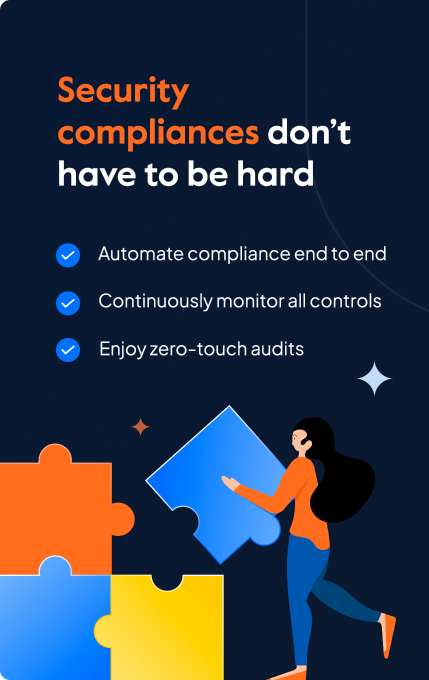Sprinto’s Organization of Information Security Policy Template
The organization of information security policy helps organizations secure their information assets and ensure the segregation of duties while implementing an effective ISMS.

What is an organization of information security policy template?
An Organization of Information Security Policy template, specifically within an ISMS framework, is a crucial document that establishes the overall approach, principles, and high-level objectives for information security management within an organization.
This template typically aligns with standards like ISO/IEC 27001 and serves as the foundation for the entire ISMS.
Why do you need this template?
This template provides a comprehensive framework that aligns with ISMS principles, enabling organizations to systematically manage and continually improve their information security practices.
By integrating seamlessly with the broader ISMS structure, this policy template facilitates risk assessment, supports decision-making processes, and helps demonstrate due diligence in protecting sensitive information assets to stakeholders and regulatory bodies.

Minimized damage
Enhance response times by providing a well-documented plan for breach notification and damage mitigation.

Demonstration of transparency
Protect market reputation by notifying impacted customers while demonstrating accountability and transparency.

Better collaboration
Create strong guidelines for communicating and resolving breaches while ensuring notifications include the right information.

Proactive response
Enhance the preparedness of recovery teams by providing a set framework, and ensuring quick responses.
How to use the organization of information security policy template?

Design and customize
Customize this template according to your business context and security requirements. Be forward-thinking when applying its scope to your business.

Test your template
Validate the steps included in this template for accuracy. Test the policy template and make changes to ensure proximity to the business context.

Acquaint your workforce
Educate your workforce on the scope of the policy, their roles and responsibilities within the function it covers, and how to use it effectively.

Make improvements
Review your policy on a regular basis (ideally once every 6 to 12 months) to ensure it is up to date and aligned with industry requirements.

Leverage automation
Roll out policies, schedule security and policy training, and gain completion acknowledgements within a single interface to ensure 100% adherence.
Organization of Information Security Policy Template
Get started with this template right now. It’s free


